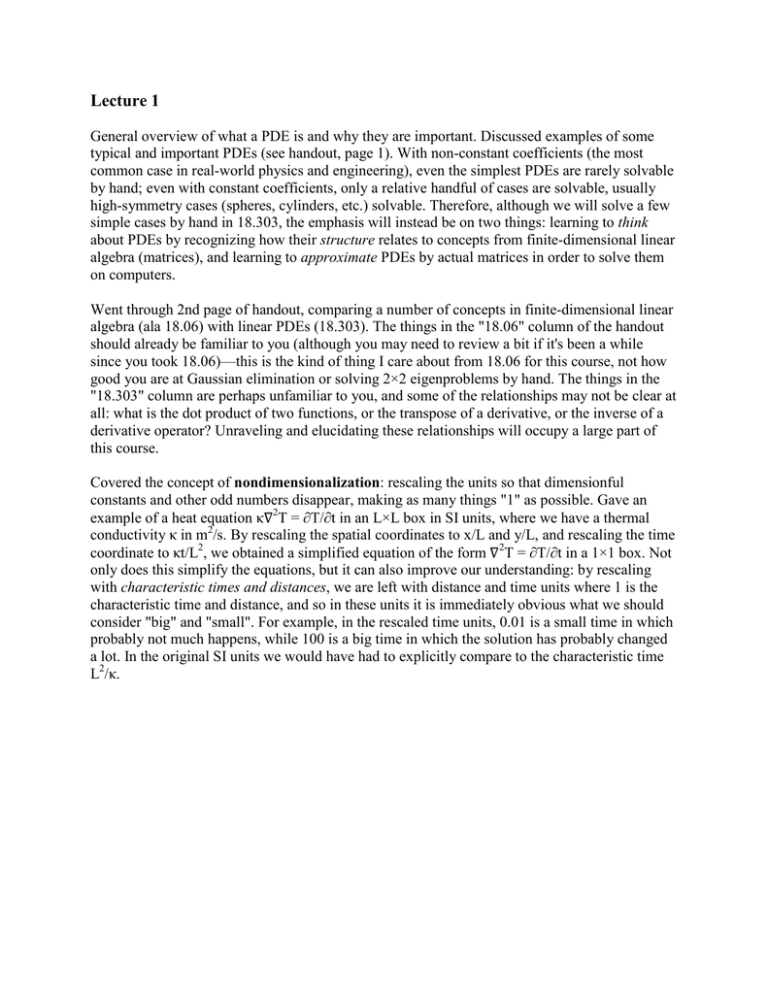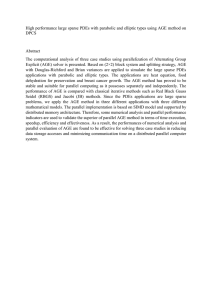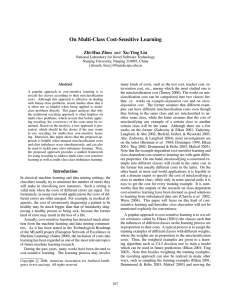Lecture 1
advertisement

Lecture 1 General overview of what a PDE is and why they are important. Discussed examples of some typical and important PDEs (see handout, page 1). With non-constant coefficients (the most common case in real-world physics and engineering), even the simplest PDEs are rarely solvable by hand; even with constant coefficients, only a relative handful of cases are solvable, usually high-symmetry cases (spheres, cylinders, etc.) solvable. Therefore, although we will solve a few simple cases by hand in 18.303, the emphasis will instead be on two things: learning to think about PDEs by recognizing how their structure relates to concepts from finite-dimensional linear algebra (matrices), and learning to approximate PDEs by actual matrices in order to solve them on computers. Went through 2nd page of handout, comparing a number of concepts in finite-dimensional linear algebra (ala 18.06) with linear PDEs (18.303). The things in the "18.06" column of the handout should already be familiar to you (although you may need to review a bit if it's been a while since you took 18.06)—this is the kind of thing I care about from 18.06 for this course, not how good you are at Gaussian elimination or solving 2×2 eigenproblems by hand. The things in the "18.303" column are perhaps unfamiliar to you, and some of the relationships may not be clear at all: what is the dot product of two functions, or the transpose of a derivative, or the inverse of a derivative operator? Unraveling and elucidating these relationships will occupy a large part of this course. Covered the concept of nondimensionalization: rescaling the units so that dimensionful constants and other odd numbers disappear, making as many things "1" as possible. Gave an example of a heat equation κ∇2T = ∂T/∂t in an L×L box in SI units, where we have a thermal conductivity κ in m2/s. By rescaling the spatial coordinates to x/L and y/L, and rescaling the time coordinate to κt/L2, we obtained a simplified equation of the form ∇2T = ∂T/∂t in a 1×1 box. Not only does this simplify the equations, but it can also improve our understanding: by rescaling with characteristic times and distances, we are left with distance and time units where 1 is the characteristic time and distance, and so in these units it is immediately obvious what we should consider "big" and "small". For example, in the rescaled time units, 0.01 is a small time in which probably not much happens, while 100 is a big time in which the solution has probably changed a lot. In the original SI units we would have had to explicitly compare to the characteristic time L2/κ. MIT OpenCourseWare http://ocw.mit.edu 18.303 Linear Partial Differential Equations: Analysis and Numerics Fall 2014 For information about citing these materials or our Terms of Use, visit: http://ocw.mit.edu/terms.


